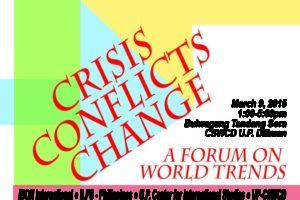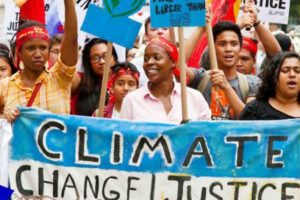The temptation to adopt the MDG-approach to the challenge of sustainable development is easy to appreciate. The Millennium Development Goals (MDGs) have proven useful in sparking public awareness on poverty and other key development concerns, and generating consensus around the goal of addressing them. Against the plethora of social, economic and environmental problems confronting the world’s peoples, it is but rational to identify priorities and focus efforts accordingly.
But even before rushing into a process of adopting new Sustainable Development Goals (SDGs), the question governments and the United Nations Development Group should first answer is why, despite the popular awareness, high-level commitment, and celebrity enthusiasm generated around the MDGs, many countries still lag behind in achieving them?
One important lesson to be drawn from the MDG experience is that development goals are not the same as development strategies.
Indeed a danger with taking the MDG approach is that it may give rise to a tendency to reduce the process of development to meeting specific, absolute, and measurable aspects of poverty or underdevelopment – such as hunger, or infant mortality – without tackling the roots of poverty and underdevelopment that give rise to hunger and preventable deaths in the first place.
So for instance primary school enrolment in Ethiopia has increased by more than 500 percent since 1994. But what happens to those school children if there are no jobs waiting for them after school? Or you have Ghana succeeding in reducing moderate malnutrition from 34 to 8 percent between 1991 and 2003 due to wider food availability but off-track to achieve MDGs 4 and 5, to improve child and maternal health due to poor health systems.
These achievements are certainly important in and of themselves. I don’t want anyone to think that I am dismissing their contribution to enhancing people’s well-being. But how can sub-saharan countries, for instance, meet the MDGs or even sustain whatever gains have been achieved so far when it is in fact de-industrializing. The ratio of manufacturing value added to GDP in sub-saharan africa has decreased by over 12% since the 1970s due in large part to the neoliberal structural adjustment policies imposed on these countries over the same period.
As Charles Gore, former LDC specialist at the UN Conference on Trade and Development (UNCTAD) acknowledged, “the MDGs have…been embedded within a particular approach to national policy which assumes that global integration, through the Washington Consensus policy package, together with good governance and more social spending, will lead to substantial poverty reduction and improved human development. But these policies have not been able to generate sufficient productive employment opportunities and livelihoods in poor countries, and they have been unable to build up those countries’ productive base and thus allow them to become less dependent on aid.”
Indeed the strength of the MDG approach — their simplicity and broad appeal — also make for their main weakness as they obfuscate the hard structural and dialectical processes at the core of poverty and underdevelopment. As Charles Gore puts it, the ascendancy of the MDG approach as the lynchpin of the current international development consensus involves the ditching of the notion of development as a comprehensive process that entails evolution and structural transformation, in favor of development conceived as a collection of quantifiable performance standards.[i]
And while many of these achievements are important, it is hard to think how these quick wins might be sustained over the long term without structural transformation of these economies.
Coming out with SDGs would pose even greater challenges with in the midst of the economic, climate, and food crises which suggests that without comprehensively addressing the power imbalances and wrongheaded policy choices at the root of poverty and underdevelopment, quick successes with meeting particular MDGs or SDGs are bound to be eroded no sooner than they are won.
So to conclude, for many of us in civil society, the debate about SDGs should not be merely about whether they should be established through an inter-governmental process under the UN GA or drafted by a commission created by the Secretary General; or whether it should be parallel to the MDGs or if they will build on the MDGs. For us the SDGs should be about coming out with alternative visions of development, of well-being; and of course the strategies necessary to attain this vision. So the process of coming out with the SDGs and the post-2015 development agenda is as crucial as the goals themselves.
This process should therefore be grounded in national processes, rather than remaining at the global level. It should also ensure the meaningful participation of all stakeholder and development actors, not just be “open” to them as the current text states. The post-2015 development agenda should not be merely an extension of the unfinished agenda of MDGs but truly transformative, equitable, just, grounded in human rights and guided by a new consciousness that respects the integrity of nature.
_______________________________________________________________________________



